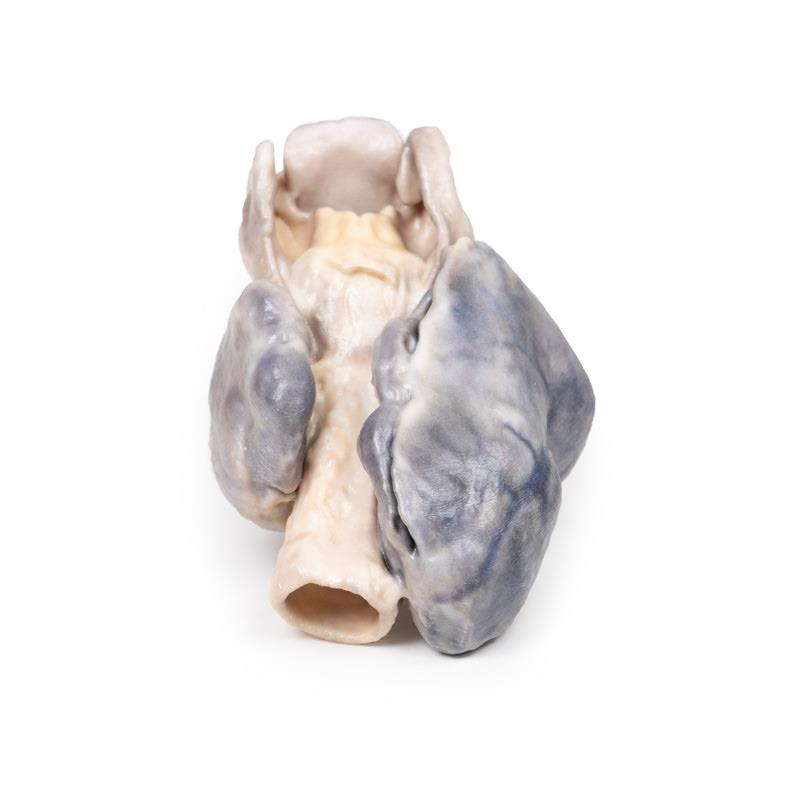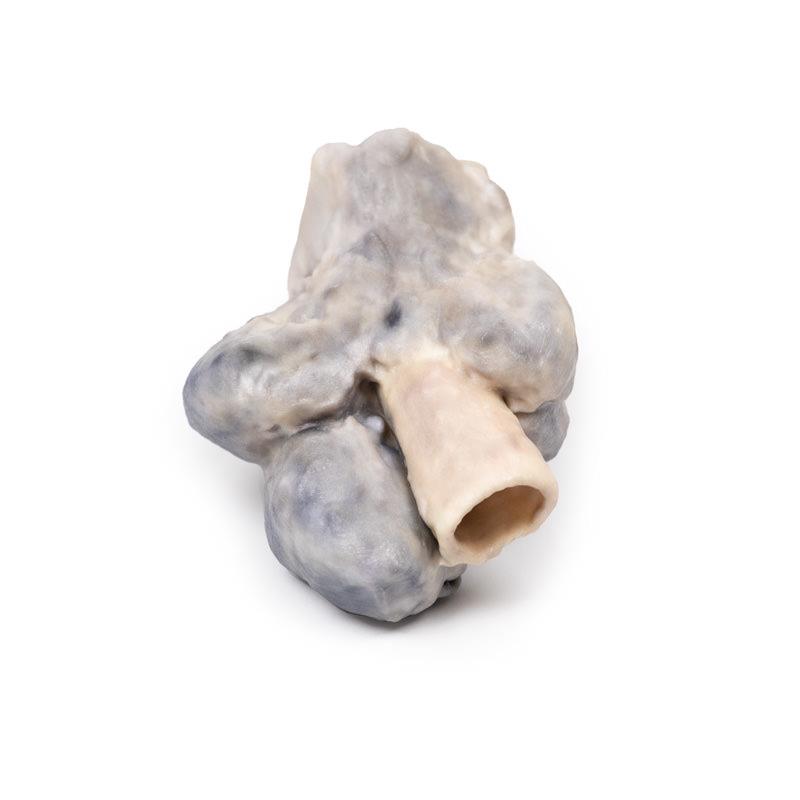Description
Clinical Presentation
A 60-year-old female presented with an abnormal swelling in the neck, persistent cough and difficulty swallowing. She gained weight over the previous few years. She died of unrelated cardiovascular disease and the specimen was obtained at post-mortem.
Pathology
The specimen, removed at post-mortem, includes the larynx, trachea and large multilobular thyroid gland. The thyroid gland is grossly enlarged particularly the right lobe, which has two large lobes extending superiorly and inferiorly for a range of 7-8mm, well beyond its normal margins when viewed on anterior aspect. Posteriorly, the oesophagus has been opened to expose the posterior wall of the trachea. The right lobe presents as larger than from the anterior perspective, and the abnormal growth appears to be mainly the inferior pole of the right lobe. The surfaces do not display major pigmentary changes. Prominent veins are visible on the surface of the right lobe.
Further information
Goitre is most often detected simply as a mass or swelling in the neck but depending on the size and location of growth it may produce pressure symptoms on the trachea and the oesophagus. There may be difficulty in breathing, dysphagia, cough, and hoarseness. Paralysis of the recurrent laryngeal nerve may occur by an expanding goitre, but this is rare. Symptoms suggesting obstruction of the trachea including cough, stridor and shortness of breath may occur. Occasionally tenderness and a sudden increase in goitre size arise due to cystic expansion and haemorrhage into a nodule [1].
Causes of goitre include autoimmune disease (Hashimoto’s thyroiditis, Grave’s disease), the formation of one or more thyroid nodules and iodine deficiency. Goitre occurs when there is reduced thyroid hormone synthesis secondary to biosynthetic defects and/or iodine deficiency, leading to increased thyroid stimulating hormone (TSH). This stimulates thyroid growth as a compensatory mechanism to overcome the decreased hormone synthesis. Elevated TSH is also thought to contribute to an enlarged thyroid in the goitrous form of Hashimoto thyroiditis in combination with fibrosis secondary to the autoimmune process in this condition. In Grave’s disease, the goitre results mainly from stimulation by the TSH receptor antibody[2].
Reference
1. Hughes et al. (2012) Goitre: Causes, investigation and management
2. Aust Family Physician, 41, 572-576.




